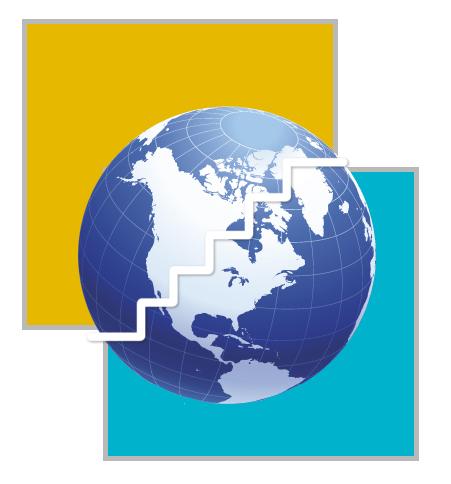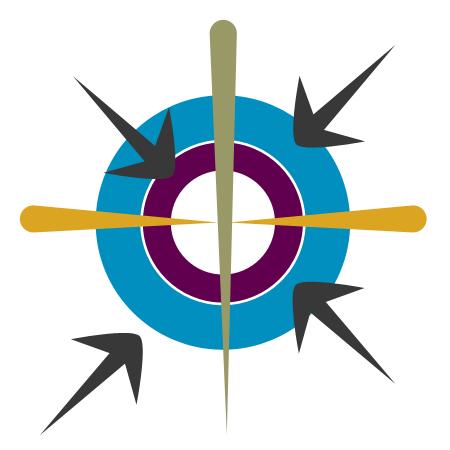News
Strategic Foresight Group is a member of the Searchlight Function, an initiative launched by the Rockefeller Foundation to undertake forward-looking analysis of emerging trends affecting development and poverty across Asia, Africa and the Americas.
SFG along with 10 other participating organizations prepares trend monitoring newsletters that reflect regionally focused perspectives across a range of topics that could have long-term implications for poor and vulnerable communities. The Foundation has in addition partnered with four organizations - Institute for the Future, Boston University Frederick S. Pardee Center for the Study of the Longer-Range Future, University of Manchester, and National Horizon Scanning Center, Government of Singapore to create high value-added visuals to emphasize the results and findings for the purposes of strategy development, learning, and wider dissemination.
Within the Searchlight Function, SFG concentrates on broader contextual issues and patterns emerging in the Asia Pacific region, the Middle East and North African regions. The newsletters are circulated to a wide range of audiences including government officials and policy-makers who share an interest in the future of poverty reduction across the region.
AsianHorizons
Launched by SFG in 2010, the Asian Horizons examines five countries in the Asia-Pacific region - India, Bangladesh, Indonesia, Thailand and Vietnam. Although the five countries are at different stages of their economic development, they share common challenges such as rapid urbanization, increased burden of diseases, a visible movement from the agrarian sector, expansion of informal sectors, demographic shifts and climate change that are likely to be sustained over the next decade. The impact of these challenges is likely to be disproportionately borne by poorer communities, resulting in increased tensions.
SFG research team conducts future-oriented trend analysis and identifies complex interactions of some of the major economic, technological and social trends that could have long-term implications for poor communities in the region, thereby providing early insights to the Foundation.
This year, the objective of the Asian Horizons Monitor has broadened to focus on more solution-oriented approaches and highlight actionable intervention areas. The relevance of these solution-oriented approaches arises from the potential for their replication in other contexts. Some of the major emerging themes and innovative trends that have been observed include �€“
Creating Urban Resilience - Expanding urban peripheries have created issues requiring more focused approaches through multi-level partnerships. The low-cost housing segment, in this regard, has been witnessing a rise in innovative low-cost technologies in India and Bangladesh, successful community-led housing projects in the case of Thailand and increased participation of public-private sectors in Vietnam. Other programs range from NGO-run non-formal schools for slum children in Bangladesh and India to the promotion of livelihood opportunities through activities such as urban agriculture and sustainable solid waste management practices.
Rural Development �€“ In the next decade, since the five countries are likely to remain predominantly rural, various schemes have been implemented in order to achieve food security and retain the workforce in the agricultural sector. A key finding has been the conscious efforts towards promotion of more community-driven agricultural practices to increase profits, especially in Indonesia and Vietnam. More importantly, the focus of agricultural practices in the region has shifted towards organic farming and away from water-intensive and chemical-intensive agriculture amongst poorer farmers. An interesting trend that has been observed, largely in India, is the emergence of business process outsourcing units in smaller towns and rural areas that could have significant long-term impacts on reducing migration to urban areas.
Information and Communication Technologies �€“The expansion of information and communication technologies in the Asia-Pacific region will be fuelled by the demand for services, especially from rural areas in sectors like governance, agriculture, education, disaster management, capacity building and banking. For example, increasing use of mobile phones and community radios has helped poor and marginal farmers in India, Bangladesh, Indonesia and Thailand access market information and best prices for their produce.
Some Examples of Emerging Trends
Urban Housing: Low-cost housing for slums in India at USD 3300 per unit. The iDesign �€˜Lift Houses�€™ in Bangladesh cost USD 3500 per 400 sq.ft. �€“ Built using bamboo and ferro cement �€“ can float with rising water level.
Climate Change Adaptation: Community-based disaster management initiatives �€“ 3000 households along with their assets were saved during 2008 floods in Sariakandi, Bangladesh.Disaster Risk Maps (2011) covers 17 provinces prone to floods and landslides in Thailand.
ICT: Mobile Computer School launched by Dariu Foundation in Vietnam, for poor kids in the Mekong Delta rural areas. GIS technology in Bangladesh, launched by MIS-Health, to generate computer aided instant maps to locate health facilities. In Thailand, ICT4D launched for Home Workers Program to promote indigenously made products using internet.
Urban Agriculture: In Jordan, average family saving USD 280 per year. In Bangladesh, household income increased to USD 2.5 (2007) from USD 1.24 (2003).
Climate Change Adaptation �€“Countries such as Bangladesh and India have responded to seasonal climate variability by introducing drought and flood resistant seeds to ensure food and livelihood security in the future. Other new initiatives emerging from the region include use of mobile technology for disaster management in extreme weather conditions, floating farm models, and boat schools and clinics that run on solar energy in the flood prone areas.
In addition to the above trends, new small-scale technologies related to renewable energy (e.g. as mini-hydro power plants, wind and solar technologies) are witnessing major breakthroughs in cost and technical efficiency, which is likely to increase access to electricity for people living in remote regions.
The Asia-Pacific region has witnessed a marked increase in the role of NGOs and community-based organizations and small social enterprises not only as facilitators but also as implementing partners at the grassroots level. There is also a progressive shift in emphasis on bottom-up approach where community participation in the development process is yielding positive and sustainable results.
Middle East Monitor
SFG�€™s Middle East Monitor (July 2010 �€“ Oct 2011) focused on emerging trends in the resource-rich GCC countries, Middle Eastern countries such as Jordan, Lebanon, Iran, Iraq, Syria, Israel and Occupied Palestinian Territories, and North African countries such as Tunisia, Morocco, Algeria and Egypt. The Middle East Monitor provided contextual information and demonstrated how trends emerging in this region compare and relate to more global trends associated with poverty and human development. The newsletter also provided valuable background knowledge and focused on replicable interventions for the developing countries.AsianInsider
SFG started a new edition, Asian Insider in November 2011, primarily covering India and Bangladesh. The newsletter provides in-depth analysis on specific topics chosen from broad themes including rural electrification, vocational training, emerging donors, water diplomacy, II and III tier cities, amongst others. The aim of the newsletter is to provide a more detailed study of a topic focusing on a number of cross-cutting issues, such as food security, small and medium enterprises, job creation, role of government, and technology that will impact the poor and vulnerable population.





